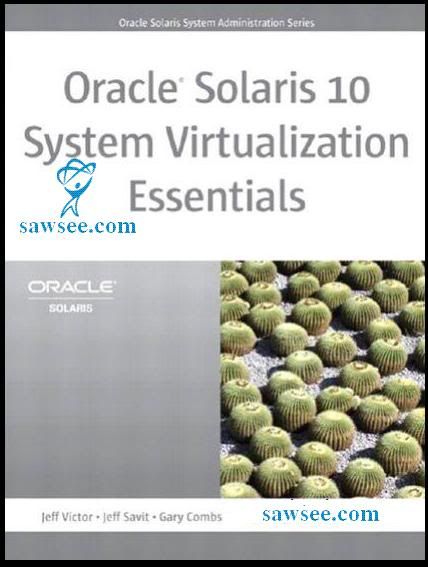Solaris Operating System 10 DVD Full Image
Platform: Solaris 10 OS, X64/X86
Language: Multi-language
Solaris operating system is a well know free OS developed by Sun and is best known for its multi-symmetric support. Like Linux, it's free and installable on PC.
Solaris is a UNIX-based operating system introduced by Sun Microsystems in 1992 as the successor to SunOS.
Solaris is known for its scalability, especially on SPARC systems, and for originating many innovative features such as DTrace and ZFS.Solaris supports SPARC-based and x86-based workstations and servers from Sun and other vendors, with efforts underway to port to additional platforms.
Solaris is certified against the Single Unix Specification. Although it was historically developed as proprietary software, it is supported on systems manufactured by all major server vendors, and the majority of its codebase is now open source software via the OpenSolaris project.
Review of Sun Solaris 10
For some time now, I have been tinkering with Solaris 10; the robust Unix from Sun Microsystems. In the past, I have posted news of the free Solaris media kit and its pictures as well as published news of Open Solaris starter kit give away.
With Sun releasing Solaris source code under the CDDL license and naming it Open Solaris, a number of clones of Solaris have cropped up in the past two years or so, such as Nexenta, Belenix and SchilliX. But Sun also provides Solaris in the form of Solaris Express incorporating the latest advances. And Solaris Express acts as a sand box with many new features eventually make their way into Solaris OS after a period of incubation.
Even though Solaris was originally designed for SPARC (Scalable Processor Architecture) hardware, it also supports Intel platforms. This has thrown open the doors for the hordes of Solaris enthusiasts who couldn't afford a SPARC based computer, to install Solaris on their PC and take it for a run.
Once you get hold of the CD/DVD containing Solaris 10, the next step is to install it. Installing Solaris from CD/DVD is a very simple and straight forward process. As long as you have a minimum of 256 MB RAM, you can go ahead with installing it. But any less memory means you will have to upgrade your PC memory before you can start installing Solaris.
I did not encounter any problems at the time of installation. And in no time, I was able to install Solaris and boot into it. Solaris 10 bundles with it mainly two desktops - them being Common Desktop Environment (CDE) and the Java Desktop System which is actually the Gnome desktop built on top of the Java framework.
in it for some time, I found the CDE to be a very functional desktop. To put it succinctly, it has some elements of the AfterStep window manager in GNU/Linux with lots of additional useful features.
In CDE, each component including the Panel can be minimized to the Desktop and all minimized applications are neatly arranged as icons on the Desktop. CDE also saves the state of a running application when you log out. And when you log back in, the application is automatically opened and displayed in its previous position.
Sun provides each Solaris user a choice of subscribing to the Sun Connection. It is a paid subscription and once you join it, you can use the Sun update manager to provide you suggestions, automatically manage updates, prioritize and keep a history of updates. OR you can also choose to apply the updates manually without any assistance. You can also download the latest patches and driver updates at sunsolve.sun.com.
Solaris Management Console 2.11
Considering that Java language is being developed by Sun, it is no surprise that it plays a very important role in Solaris. For instance, to do system administration tasks, Solaris has an all-in-one GUI toolkit in Solaris Management Console which has been developed using Java.
While it is also possible to use commands to achieve system and network administration tasks, SMC happens to be the preferred way. Here you can know about the status of your system such as your system information, processes running, logs, performance and so on. More over, it contains options to do almost all system administration tasks such as managing users, system configuration, managing services, storage, devices and hardware.
Folder Link:
Download Link:
 Comments (0)
All
Comments (0)
All














